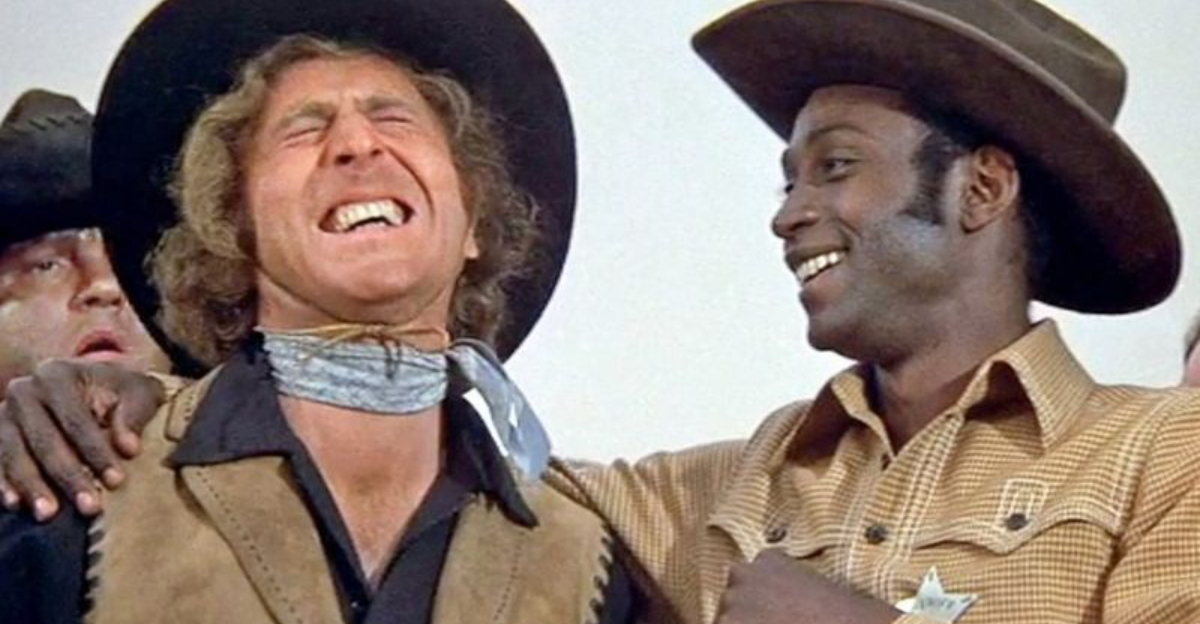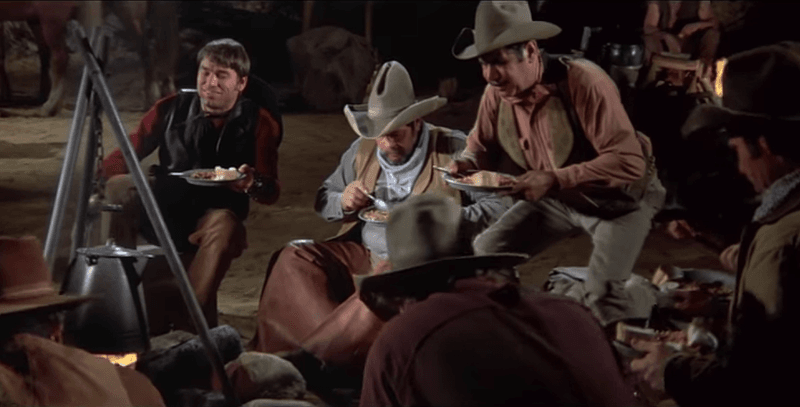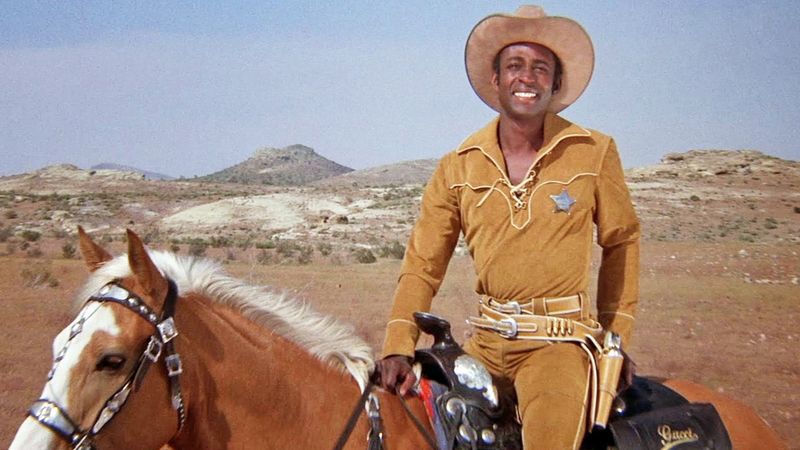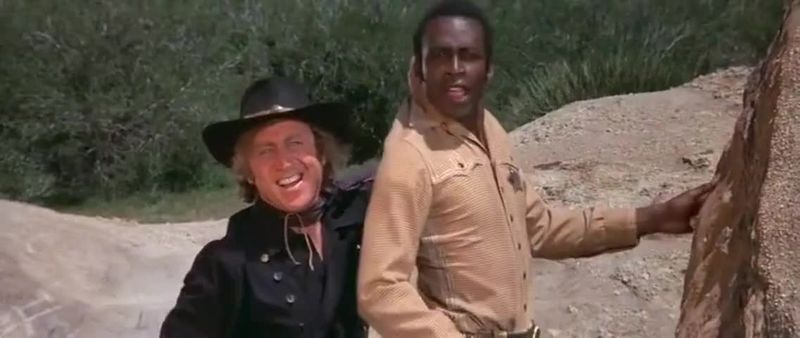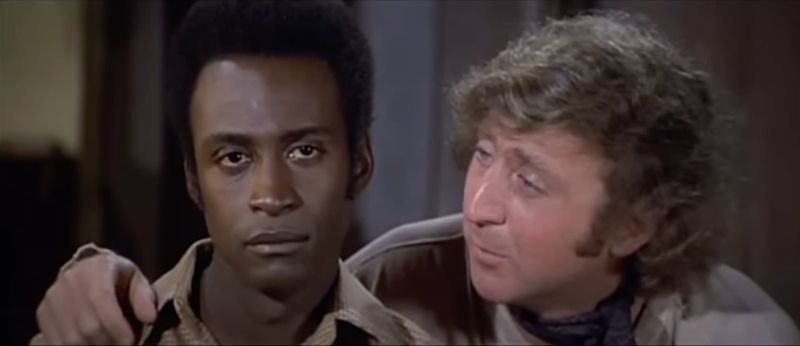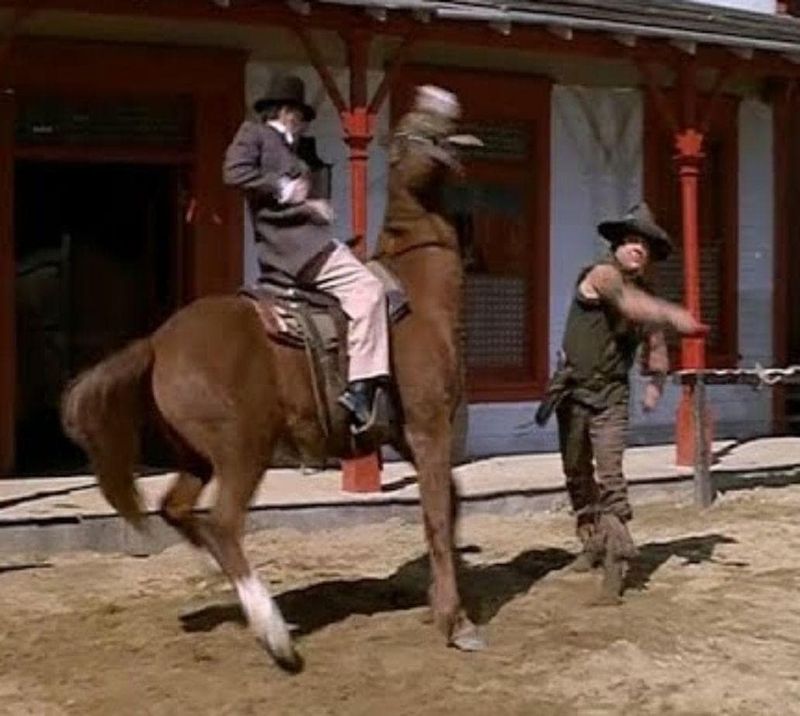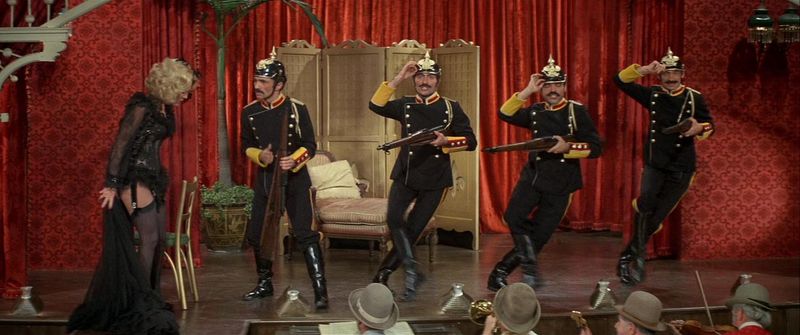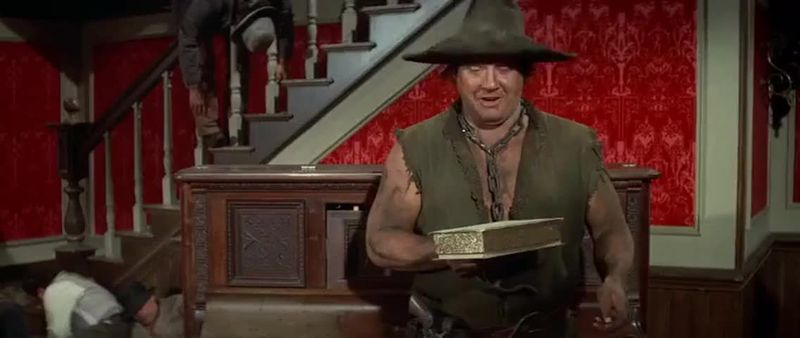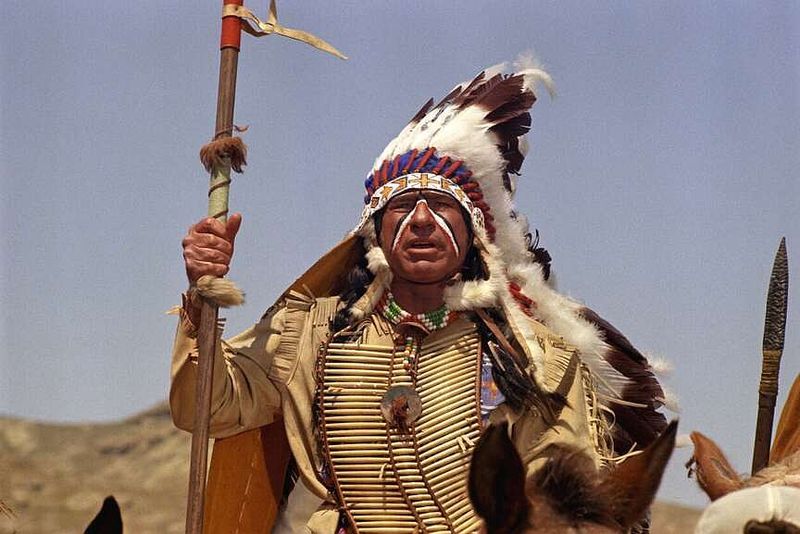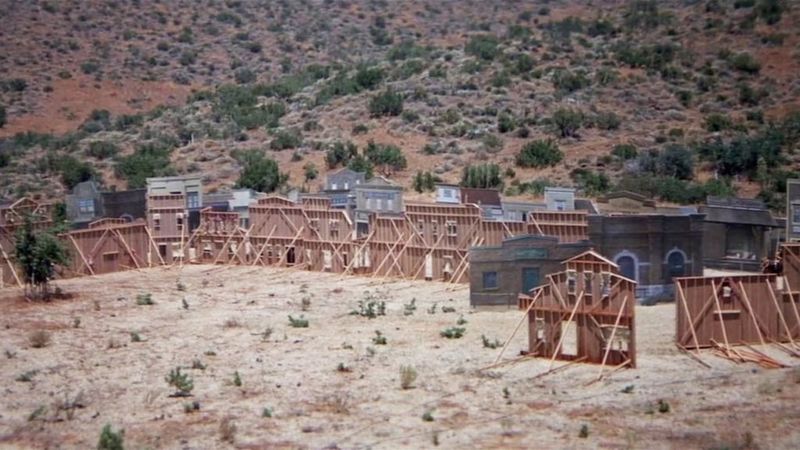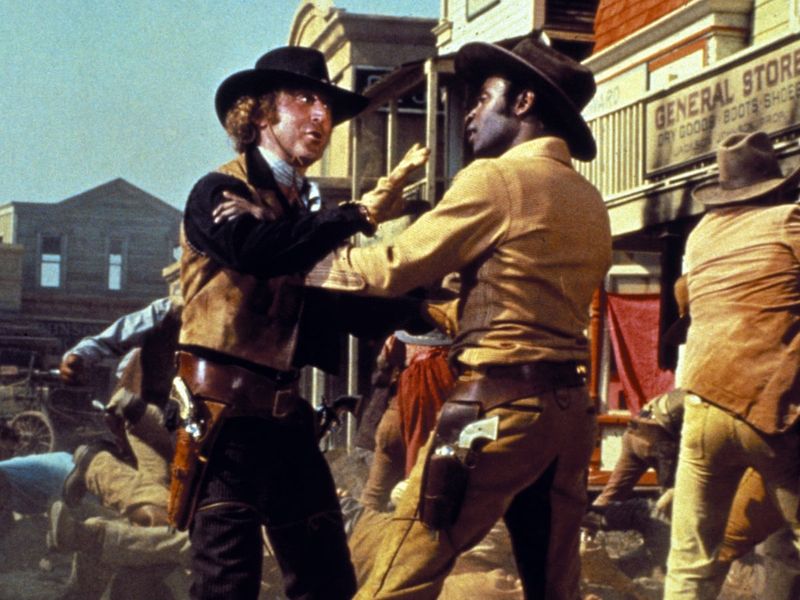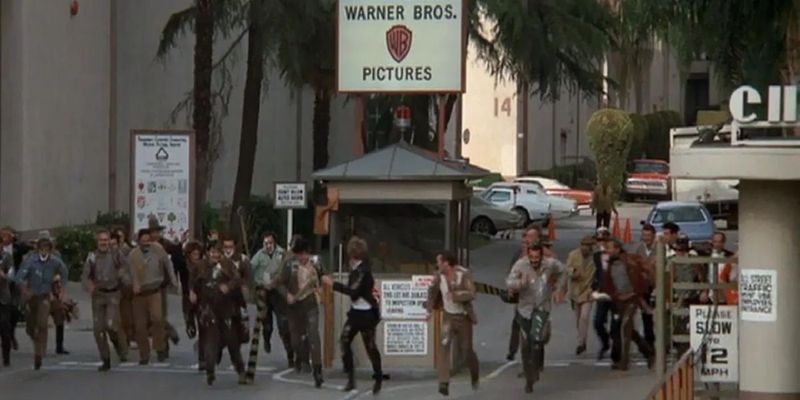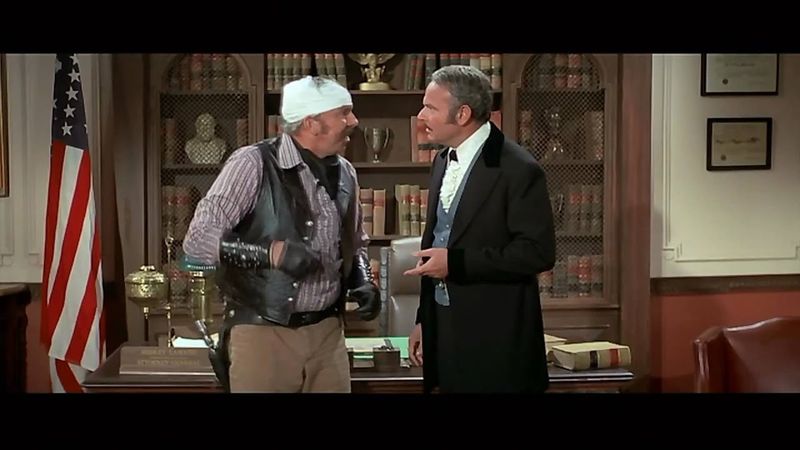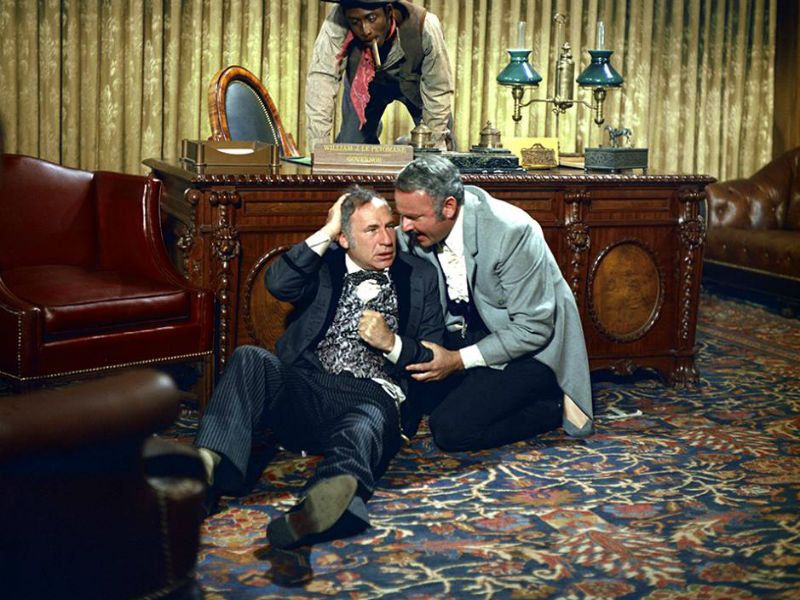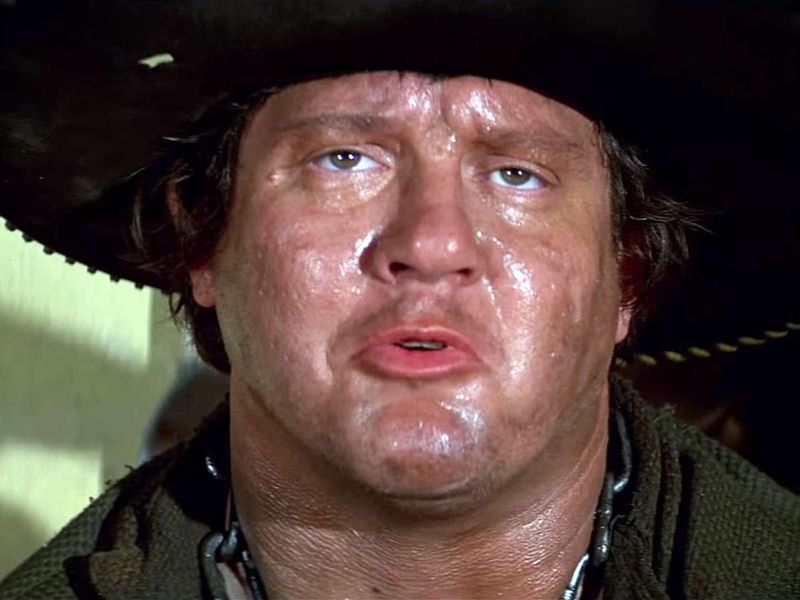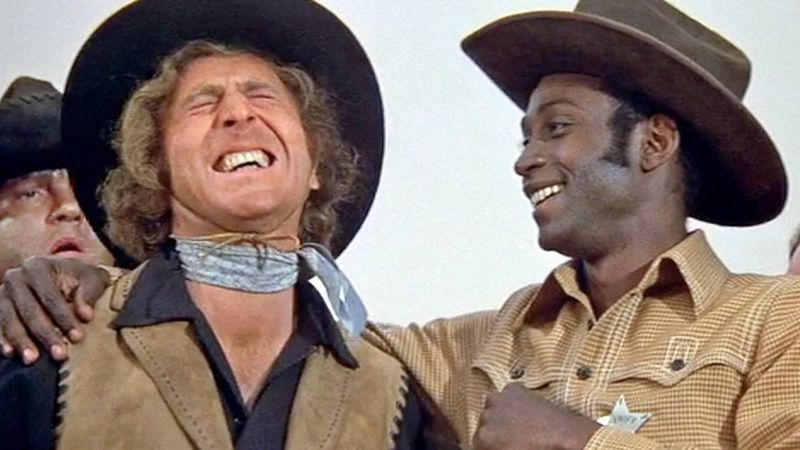Mel Brooks’ ‘Blazing Saddles’ is a groundbreaking comedy that challenges cinematic norms through its outrageous satire of racism and Hollywood stereotypes. With its bold humor and unexpected twists, it redefined the Western genre by turning convention on its head and offering a comedic lens on social issues. Here are 15 moments that showcase why this film remains an iconic masterpiece in comedic cinema.
1. The Campfire Bean Scene
Gather ’round the campfire for a scene that’s as infamous as it is uproarious. A group of cowboys indulges in a hearty meal of beans, setting the stage for a symphony of flatulence that echoes through the night. This audacious moment shattered comedic taboos, introducing the first extended fart joke in a major Hollywood film.
The sheer audacity of this scene left audiences both shocked and amused, marking it as a pioneering moment in film comedy. Its blend of slapstick and irreverence set a new standard for humor in cinema.
2. The Arrival of a Black Sheriff in a Racist Town
When Sheriff Bart rides into Rock Ridge, the townsfolk’s disbelief is palpable. The sight of a Black lawman in a predominantly white, racist town unsettles the townspeople, setting the stage for a film that doesn’t shy away from confronting racial stereotypes.
Mel Brooks uses this bold opening to immediately satirize American racism, flipping expectations and challenging viewers to laugh while thinking critically about societal norms. The moment is a masterclass in using humor as a tool for social commentary.
3. “Where the white women at?”
Bart’s clever disguise as a Klansman leads to one of the film’s most iconic lines: “Where the white women at?” This phrase, laced with absurdity, flips the racial script and highlights the ridiculousness of racial fears.
By mocking the prejudices of the time, the film cleverly uses humor to expose the irrationality of bigotry. The comedic timing and Bart’s quick wit create a moment that’s both uncomfortable and brilliantly funny, showcasing the film’s daring approach to comedy.
4. The “N” Word
In a bold move, ‘Blazing Saddles’ utilizes racial slurs to expose the ignorance of bigotry. While the repeated use of the “N” word is jarring, it’s intended to showcase the depths of stupidity in racial prejudice.
The film doesn’t use the term lightly, ensuring that each instance is a pointed critique of racism’s absurdity. It’s a daring approach that continues to challenge audiences, reflecting Mel Brooks’ commitment to using comedy as a means to confront uncomfortable truths.
5. Mongo Punches a Horse
In the realm of the surreal, Mongo’s punch to a horse stands out as a memorable gag. With one powerful swing, Mongo, played by Alex Karras, knocks out a horse, emphasizing the film’s embrace of absurdity.
This moment captures the essence of the film’s comedic style, blurring the lines between reality and cartoon-like exaggeration. It’s an unexpected twist that leaves audiences laughing at its sheer ridiculousness, reinforcing the film’s commitment to pushing comedic boundaries.
6. Lili Von Shtupp’s Sultry Musical Number
Madeline Kahn’s portrayal of Lili Von Shtupp is a comedic tour de force. Her performance of “I’m Tired” parodies Marlene Dietrich with a blend of humor and allure, packed with innuendo and camp.
Kahn’s ability to combine sultriness with satire earned her an Oscar nomination, highlighting the film’s layered approach to comedy. The number is a testament to how the film skillfully intertwines parody with homage, making it both a memorable and hilarious moment.
7. The Candygram for Mongo
Sheriff Bart’s clever ruse involves delivering a literal Candygram to Mongo, which humorously explodes upon opening. This cartoonish tactic is reminiscent of the antics seen in Looney Tunes.
The scene’s blend of slapstick humor and cleverness highlights the film’s knack for creative comedy. It stands as a testament to Mel Brooks’ ability to weave unexpected humor into a Western setting, turning a classic showdown into a moment of pure, explosive laughter.
8. Mel Brooks as the Yiddish-Speaking Native Chief
In a scene that defies convention, Mel Brooks portrays a Native American chief who speaks Yiddish. This unexpected twist serves as a sharp parody of Hollywood’s historical approach to Indigenous representation.
The chief’s humorous declaration, “They darker than us!” when sparing a Black family, is a witty critique of racial and cultural stereotypes. It’s a moment that encapsulates the film’s fearless satire, challenging audiences to reconsider traditional narratives through laughter.
9. The Fake Town Made of Cardboard
To outsmart the villains, the townsfolk construct a fake Rock Ridge out of cardboard cutouts. This comedic ploy breaks the fourth wall, inviting viewers to revel in the absurdity of the scene.
The flimsy set pieces serve as a metaphor for the superficiality of facades, both in movies and society. This meta-humor moment showcases the film’s ability to blend slapstick with a deeper commentary on appearances, creating a scene that’s as thought-provoking as it is hilarious.
10. The Climax Spills Into Another Movie
In an unprecedented move, the film’s climactic showdown spills over into another movie set, blurring the boundaries of genre and narrative. This chaotic scene is a brilliant commentary on the artifice of cinema.
By tearing down the fourth wall, the film invites audiences to question the nature of storytelling itself. It’s a bold statement that blurs the line between fiction and reality, leaving viewers both amused and contemplative about the power of cinematic illusion.
11. The Pie Fight on the Warner Bros. Lot
The traditional Western shootout is turned on its head when it devolves into a pie fight on the Warner Bros. lot. Cowboys and dancers engage in a whimsical brawl, with pies flying in every direction.
This scene parodies Hollywood excess and the often absurd nature of cinematic spectacle. By replacing bullets with pies, the film delivers a fresh take on the classic showdown, reminding audiences of the joy that can be found in comedic creativity.
12. “It’s Hedley, not Hedy!”
Harvey Korman’s villainous character offers a running gag that’s both ridiculous and endearing. Constantly correcting others’ mispronunciation of his name as “Hedy,” referencing actress Hedy Lamarr, adds a layer of levity to his menacing persona.
This recurring joke underscores the film’s witty use of language and character quirks to enhance its comedic appeal. It’s these small, humorous details that contribute to the film’s enduring charm and its ability to amuse audiences with sharp wit.
13. The Gov. William J. Le Petomane Character
Mel Brooks’ portrayal of the infantile Governor William J. Le Petomane is a comedic tour de force. His antics, marked by an obsession with both power and bathroom humor, reflect a satirical take on political incompetence.
Named after a real-life French flatulist, Le Petomane’s character cleverly combines historical reference with absurdity. This performance highlights Brooks’ knack for blending slapstick with insightful critique, making the governor’s scenes some of the film’s most hilariously pointed.
14. Mongo’s Existential Crisis
In a rare quiet moment, Mongo, the film’s hulking brute, offers an unexpectedly profound observation: “I’m just a pawn in the game of life.” This line, delivered with sincerity, adds depth to his otherwise cartoonish character.
The juxtaposition of Mongo’s simple persona with existential musings highlights the film’s ability to blend absurdity with meaningful commentary. This moment underscores the film’s unique charm, showcasing how even the most comedic characters can offer unexpected insights.
15. The Breaking of the Fourth Wall
As the film concludes, audiences witness a groundbreaking moment of meta-comedy. Characters in ‘Blazing Saddles’ sit in a theater, watching the very movie they’re part of, breaking the fourth wall in spectacular fashion.
This ending challenges viewers to reflect on the nature of storytelling and the artifice inherent in film. It’s a clever nod to the illusion of cinema, inviting audiences to laugh while pondering the layers of reality and fiction intertwined within the medium.
